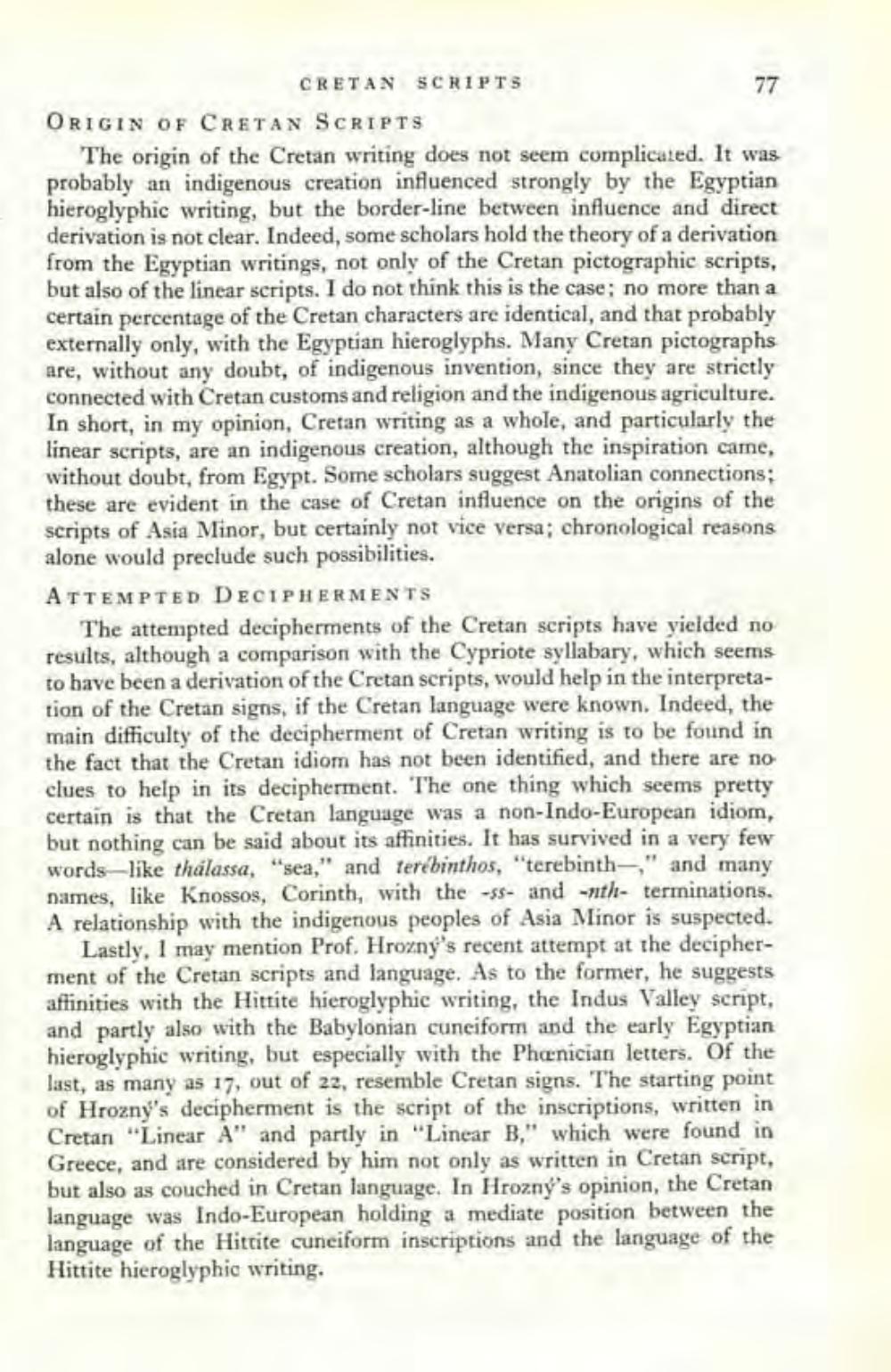________________
CRETAN SCRIPTS
ORIGIN OF CRETAN SCRIPTS
The origin of the Cretan writing does not seem complicated. It was probably an indigenous creation influenced strongly by the Egyptian hieroglyphic writing, but the border-line between influence and direct derivation is not clear. Indeed, some scholars hold the theory of a derivation from the Egyptian writings, not only of the Cretan pictographic scripts, but also of the linear scripts. I do not think this is the case; no more than a certain percentage of the Cretan characters are identical, and that probably externally only, with the Egyptian hieroglyphs. Many Cretan pictographs are, without any doubt, of indigenous invention, since they are strictly connected with Cretan customs and religion and the indigenous agriculture. In short, in my opinion, Cretan writing as a whole, and particularly the linear scripts, are an indigenous creation, although the inspiration came, without doubt, from Egypt. Some scholars suggest Anatolian connections; these are evident in the case of Cretan influence on the origins of the scripts of Asia Minor, but certainly not vice versa; chronological reasons alone would preclude such possibilities. ATTEMPTED DECIPHERMENTS
The attempted decipherments of the Cretan scripts have vielded no results, although a comparison with the Cypriote syllabary, which seems to have been a derivation of the Cretan scripts, would help in the interpretation of the Cretan signs, if the Cretan language were known. Indeed, the main difficulty of the decipherment of Cretan writing is to be found in the fact that the Cretan idiom has not been identified, and there are no clues to help in its decipherment. The one thing which seems pretty certain is that the Cretan language was a non-Indo-European idiom, but nothing can be said about its affinities. It has survived in a very few words like thalassa, "sea," and terebinthos, "terebinth " and many names, like Knossos, Corinth, with the -55- and -nth- terminations. A relationship with the indigenous peoples of Asia Minor is suspected.
Lastly, I may mention Prof. Hrozny's recent attempt at the decipherment of the Cretan scripts and language. As to the former, he suggests affinities with the Hittite hieroglyphic writing, the Indus Valley script, and partly also with the Babylonian cunciform and the early Egyptian hieroglyphic writing, but especially with the Phænician letters. Of the last, as many as 17, out of 22, resemble Cretan signs. The starting point of Hrozny's decipherment is the script of the inscriptions, written in Cretan "Linear A" and partly in "Linear B," which were found in Greece, and are considered by him not only as written in Cretan script, but also as couched in Cretan language. In Hrozný's opinion, the Cretan language was Indo-European holding a mediate position between the language of the Hittite cunciform inscriptions and the language of the Hittite hieroglyphic writing.




